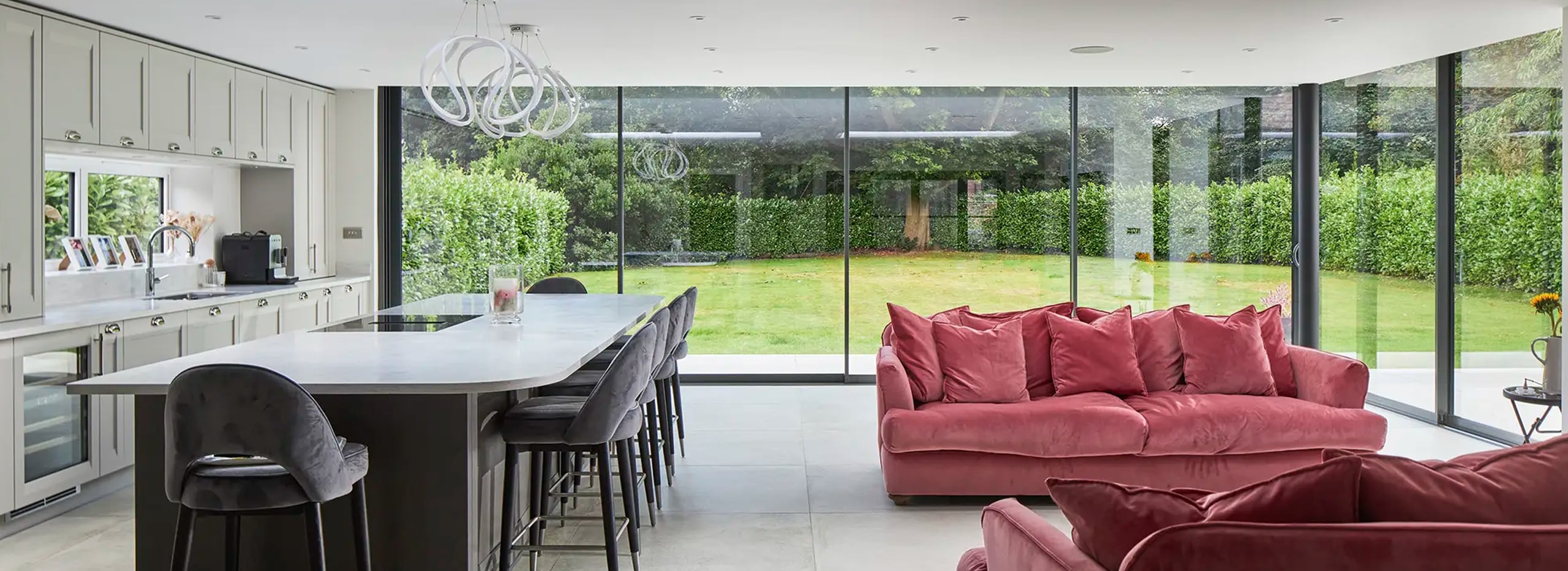
A key driver in the UK’s move towards reducing carbon emissions, Future Homes Standard aims to set more ambitious performance standards for energy efficiency and heating of new-build homes.
As with other industries, the glazing sector has been preparing for the potential impact of these regulations, especially on the self-build market. With home heating and power accounting for around 14% of the UK’s energy consumption, the goal of reducing emissions by 75-80% from new homes built under the standard is a significant step towards achieving net-zero carbon.
The challenges for the glazing industry
The major challenge that the glazing industry, along with many other sectors, faces is balancing the technical demands of meeting stricter emissions and energy efficiency goals with the cost implications of developing new products. The Future Homes Standard, aimed at reducing the environmental footprint of new builds, requires innovations across all sectors, including glazing, where thermal performance, materials, and design need to evolve.
Current Building Regulations Part L
In 2022, changes to Building Regulations Part L raised the thermal performance standards for new homes. The required U-values for glazed doors, for example, were reduced to 1.2W/m²K and 1.4W/m²K. This shift rendered many older glazing products obsolete and spurred a wave of innovation within the industry. However, until the Future Homes Standard consultation was published in late 2023, there was considerable uncertainty about the exact requirements.
Triple glazing: potential and limitations
A major concern for the glazing industry was whether the Future Homes Standard would necessitate triple glazing across the board. While triple glazing offers benefits like improved insulation, it also presents challenges including supply chain limitations, increased weight and size constraints and higher costs.
These factors could have significantly limited the design and practicality of glazing products, particularly for self-builders and custom homes that often prioritize unique and expansive architectural features. As it stands the consultation document suggests that U-value requirements for doors and windows may not change drastically, easing some of these concerns.
Room for design flexibility
One of the fears was that stricter standards would limit the size and style of windows and doors, which could compromise the aesthetics of new homes, particularly in the self-build market. However, the current proposals seem to allow for continued flexibility in design, meaning that self-builders will still have the freedom to incorporate contemporary and creative glazing solutions without being overly constrained by regulation.
The glazing industry response to Future Homes Standard
The response from the glazing industry to the Future Homes Standard consultation has been largely positive. While there are concerns about balancing stringent energy efficiency goals with the costs of homebuilding—especially in light of the existing housing stock’s inefficiency—most feedback has been optimistic about the feasibility of meeting these standards without stifling innovation or design flexibility.
The ongoing challenge will be ensuring that new builds are sustainable and energy-efficient without becoming prohibitively expensive, particularly in the current economic climate.
From an IDSystems perspective, we’ll continue to improve and develop our products, much as we have for the past 25 years, so that we are able to offer solutions whatever our customers require. Our German designed bifold doors, ultra-slim sliding doors and innovative Swiss slide and turn doors already comfortably meet Building Regulations and provide options whatever our customers are planning.